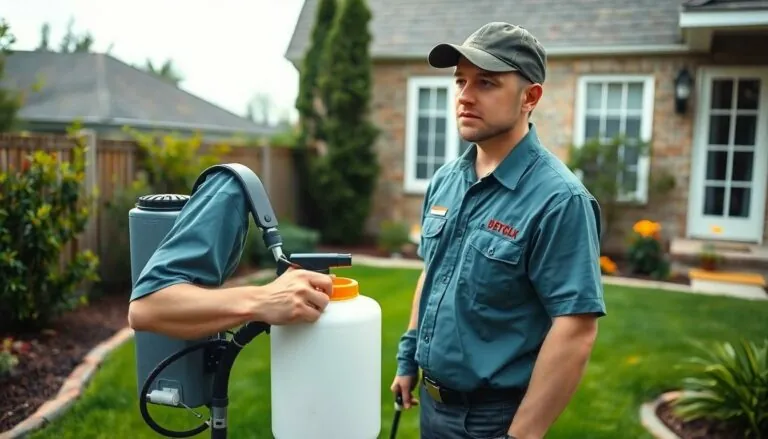Table of Contents
ToggleMold: the uninvited guest that shows up without a warning and overstays its welcome. Homeowners often find themselves asking if this pesky fungus is covered by their home insurance. After all, no one wants to deal with a moldy mess while juggling the stress of repairs and the possibility of financial loss.
Understanding the ins and outs of insurance coverage can feel like deciphering ancient hieroglyphics. Some policies might cover mold damage, while others leave homeowners high and dry. If you’ve ever had a mold scare, you know this isn’t just a matter of aesthetics—it’s about protecting your home and wallet. So let’s dive into the world of mold coverage and find out if your policy has your back or if you’ll be left to fend for yourself against this sneaky intruder.
Understanding Mold Coverage
Home insurance policies vary significantly when it comes to mold coverage. Some policies include mold damage under specific circumstances, while others outright exclude it. Presence of water damage plays a crucial role in determining mold coverage; if water damage stems from a covered peril, insurance may pay for mold removal.
Homeowners must examine their policy details. Some insurers specify conditions for mold coverage, such as prompt reporting of water damage. If a homeowner neglects to address the initial source of moisture, insurance might deny the claim.
Coverage limits often apply. Many policies impose a cap on mold damage claims, with amounts typically ranging from $500 to $5,000. Homeowners should request clarity from their insurance provider regarding specific terms.
Proactive measures can help secure better coverage. Conducting regular home inspections can identify leaks early and eliminate potential mold growth. Installing ventilation systems in damp areas also reduces humidity levels, decreasing mold risk.
Certain types of insurance policies provide broader coverage. For instance, policies labeled as “all-risk” may cover mold unless explicitly excluded. However, standard policies often have more restrictive terms, increasing the chance of mold-related claims being denied.
Variations in state regulations also impact mold coverage. Some states require insurers to offer mold coverage as part of policies, while others do not mandate it at all. Homeowners should be aware of local laws when reviewing their options.
Understanding these nuances helps homeowners navigate the complexities of insurance coverage effectively. Gaining a comprehensive grasp of policy specifics ensures better preparedness for addressing mold-related issues.
Common Types of Mold in Homes
Mold commonly develops in residential spaces, often linked to specific conditions. Two significant types of mold arise from water damage and humidity.
Mold from Water Damage
Mold from water damage typically results from leaks, flooding, or plumbing failures. Water creates an ideal breeding ground for mold. Many homeowners discover this type of mold hidden behind walls or beneath floors. Remediation efforts, when necessary, involve thorough cleaning and removing affected materials. Insurers may cover the costs if the water damage stems from a peril listed in the policy. It’s essential to document the water damage immediately to support any claims related to mold removal.
Mold from Humidity
Mold from humidity usually occurs in poorly ventilated spaces with high moisture levels. Basements, bathrooms, and kitchens often become hotspots due to condensation. Warm air carrying moisture can settle on cool surfaces, promoting mold growth. Maintaining appropriate humidity levels through circulation and dehumidifiers can prevent an outbreak. Homeowners may need to address this type of mold to avoid extensive damage. Some insurance policies apply coverage for mold treatment under certain humidity-related circumstances, emphasizing the importance of understanding policy specifics.
Home Insurance Policy Basics
Understanding home insurance policies is vital for homeowners concerned about mold coverage. Policies vary widely, influencing how mold-related damage is addressed.
Types of Home Insurance Policies
Several types of home insurance policies exist, each offering different coverage levels. An “actual cash value” policy often pays for damages after depreciation, while “replacement cost” pays to replace items without deducting for depreciation. “All-risk” policies cover all perils unless explicitly excluded, providing broader protection, but may come with higher premiums. “Named perils” policies, on the other hand, only cover specific risks listed in the policy. Homeowners should select a policy type that aligns with their needs and understand how mold fits within that framework.
Common Exclusions in Policies
Many policies include common exclusions that homeowners must recognize. Mold caused by neglect or lack of maintenance typically isn’t covered. Policies often exclude mold resulting from flooding or sewer backups unless additional coverage is purchased. Furthermore, some insurers may deny claims for mold found in locations like basements and attics without proper ventilation or moisture control. Awareness of these exclusions equips homeowners for informed conversations with their insurance providers, ensuring they understand their coverage limitations.
Is Mold Covered by Home Insurance?
Homeowners often question mold coverage in their insurance policies. Understanding the specifics is crucial for effective protection against potential losses.
Factors Influencing Coverage
Insurance coverage for mold hinges on several factors. The cause of mold growth plays a significant role. If mold arises from a covered peril, such as a burst pipe, policies may cover remediation costs. In contrast, mold resulting from neglect or poor maintenance typically falls outside coverage. Policy limits also matter; coverage can range from $500 to $5,000. Homeowners should document all incidents of water damage immediately. Regular inspections can prevent mold issues, enhancing the likelihood of coverage. Each policy differs, meaning specific terms vary across providers. Awareness of these factors ensures homeowners can make informed decisions regarding their mold coverage.
State-Specific Regulations
State regulations significantly impact mold coverage in insurance policies. Some states enforce stricter rules on mold-related claims, while others leave it more flexible. Requirements for coverage can differ, affecting homeowner obligations. Certain regions may mandate additional disclosure of mold issues during property transactions. Homeowners must familiarize themselves with local laws and how they influence coverage options. Conducting thorough research on state regulations equips homeowners for discussions with insurers. Gathering information from state departments or legal resources can clarify specific requirements. Each state’s regulations can shape the extent of mold coverage under various insurance policies.
Options if Mold Is Not Covered
Homeowners facing mold damage without insurance coverage can explore several options to address the situation effectively.
Preventative Measures for Homeowners
Taking preventative measures significantly reduces mold risk. Regular home inspections help identify water leaks or humidity issues early. Installing ventilation systems promotes air circulation, especially in damp areas. Homeowners can also utilize dehumidifiers to maintain optimal humidity levels, ideally between 30-50%. Utilizing mold-resistant materials during construction or renovation reduces future mold growth. Implementing these strategies saves money on potential remediation and ensures a healthier living environment.
Home Insurance Claims Process
Navigating the home insurance claims process requires clarity and preparation. Documenting all mold-related damage with photographs and written records is essential. This documentation provides proof of the extent of the damage. Filing a claim promptly after discovering mold increases the likelihood of coverage, especially if linked to a covered peril. Homeowners should communicate clearly with their insurance agent, asking specific questions about their policy terms. Understanding the claims process helps avoid delays and complications when seeking financial assistance for repairs.
Understanding mold coverage in home insurance is essential for homeowners. The complexity of insurance policies can lead to confusion about what’s included and what’s not. By reviewing policy details and discussing coverage with insurance providers, homeowners can gain clarity on their specific situation.
Taking proactive measures to prevent mold growth can also make a significant difference. Regular inspections and proper ventilation not only safeguard health but may also enhance insurance coverage options. Ultimately, being informed and prepared can help homeowners navigate the challenges of mold damage and its potential financial impact.



